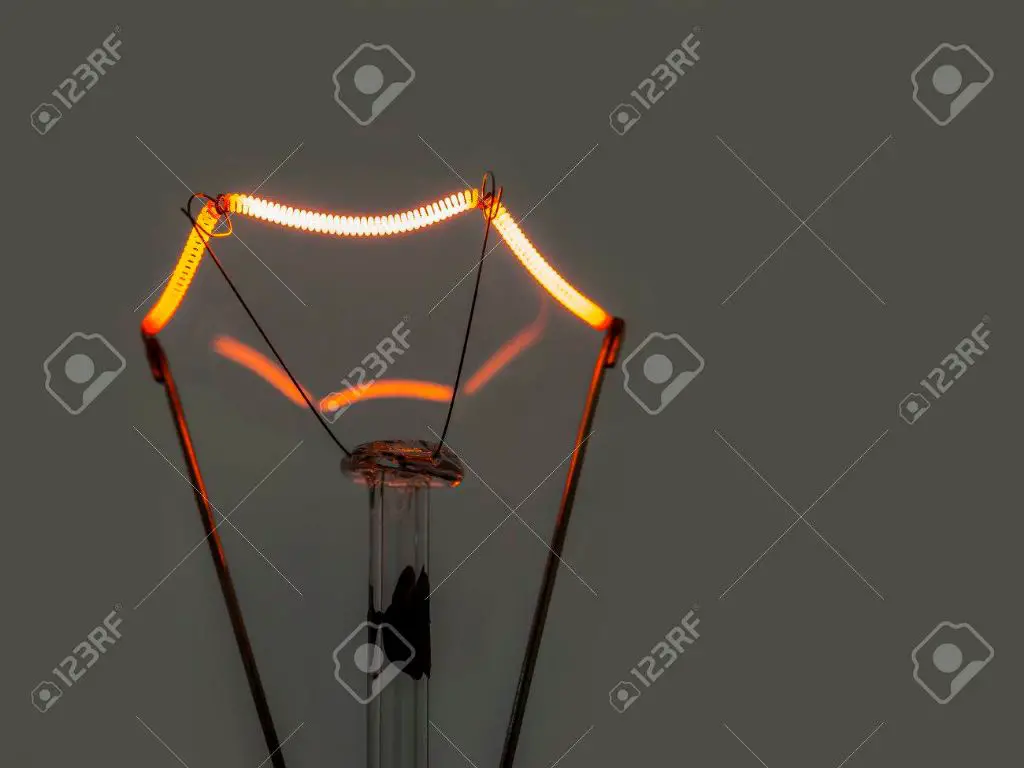What Are The Parts Of A Light Called?
A light consists of several different parts that work together to produce light. The main parts of a basic light includes the light bulb, socket, wires, switch, and light fixture or base. The light bulb contains a filament that heats up when electricity passes through it, causing the filament to glow and emit light. The glass envelope encloses and protects the inner workings of the bulb. The base connects the bulb to a socket and lamp holder. Wires connect the lamp to a switch and power source, allowing the user to turn the light on and off. The light fixture houses and protects the bulb and directs its light. Understanding what each part does helps explain how a light produces illumination.
Light Bulb
A light bulb is a source of electric light that works by passing current through a thin filament, heating it up to incandescence until it glows and emits visible light. The glowing filament is protected from oxidation by an evacuated glass bulb that encloses it. Light bulbs are commonly used as electric light sources in household lighting, as well as in flashlights and many other applications
(Light bulb).
Light bulbs convert electrical energy into light energy efficiently and in a controlled manner. They allow people to produce artificial light when and where it is needed. Incandescent light bulbs are the original type of electric light bulb and work by heating a tungsten wire filament inside a glass bulb filled with inert gas. Fluorescent light bulbs work by using electricity to excite mercury vapor, causing it to emit ultraviolet light which then activates a phosphor coating to glow (“Light bulb,” 2022). LED light bulbs generate light when electrons move through a semiconductor material
(Light bulb Definition & Meaning).
Overall, the primary role of a light bulb is to convert electricity into visible light in a reliable and controllable way for illumination purposes. The development of the light bulb was a major breakthrough in lighting technology that helped drive electrification and enable humans to create light on demand.
Filament

The filament is a thin wire that runs through the center of the light bulb. It is commonly made from tungsten, which has a very high melting point of over 3,400°C. Tungsten is used because it can withstand the high temperatures required for incandescent bulbs to produce light. When electricity passes through the filament, it heats up and begins to glow white hot, producing visible light. The filament’s purpose is to convert electrical energy into light energy through this heating process known as incandescence or blackbody radiation. Early filaments were made from carbon, but carbon burned out too quickly. Tungsten filaments last much longer. They must be very thin, sometimes as fine as a hair, in order to withstand the temperatures and allow electricity to pass through without burning out immediately.
Sources:
https://en.wikipedia.org/wiki/Incandescent_light_bulb
https://tamcogroup.com/how-led-filament-bulbs/
Glass Envelope
The glass envelope surrounding the filament in an incandescent light bulb serves several important purposes. It provides mechanical protection, insulating the filament from oxygen and moisture in the air which would cause it to burn out quickly if exposed. The glass bulb also helps contain the inert gas mixture inside the bulb, such as argon or nitrogen, which slows down evaporation of the filament. Additionally, the glass allows the bulb to withstand high temperatures generated by the filament when it is lit up. The glass needs to be able to withstand thermal stresses and prevent cracks or explosions. Pyrex or aluminosilicate glass is often used for its high heat resistance. The glass envelope also protects users from the high voltage required to light the filament, as well as from ultraviolet radiation emitted by the hot filament. Early lightbulbs used clear or frosted glass, while later bulbs often use coated or treated glass to filter out unwanted infrared or ultraviolet light. Overall, the glass envelope plays a critical role protecting the filament and regulating the environment inside the bulb for optimal performance and lifespan. [1]
Base
The base of a light bulb is the bottom part that connects to the socket. There are several common types of bases used for screw-in light bulbs:
- E26/E27 – The E26 (in North America) or E27 (in Europe) base is the standard medium screw-in base used for common household light bulbs. It has a diameter of 26mm or 27mm.
- E12/E14 – The E12 and E14 are smaller candelabra bases used for smaller decorative bulbs. E12 has a diameter of 12mm and E14 has 14mm diameter.
- GU10 – The GU10 is a common two pin base used for spotlights and track lighting. It has a diameter of 10mm.
- MR16 – The MR16 is a two pin base popular for low voltage halogen bulbs. It has a 16mm diameter.
The base contains the electrical contacts that connect to the socket when screwed in. This allows electricity to flow through the bulb to light it up. Selecting the proper base size ensures the bulb makes a solid connection with the socket.
According to https://www.bulbs.com/learning/basechart.aspx, the most common screw-in base sizes used in North America are E26/E27, E12/E14, and GU10.
Socket
The socket, also known as the lamp holder or light bulb socket, is the part that holds the light bulb in place and connects it to the electrical power source (1). The socket’s main purpose is to provide a secure physical and electrical connection between the bulb and the lamp or lighting fixture (2).
Most common household light sockets have a cylindrical or threaded design that allows screwing in of the light bulb. The threads allow the bulb to be securely fastened while also maintaining continuous contact between the electrical contacts on the base of the bulb and inside the socket (1). This continuous contact ensures uninterrupted flow of electrical current to illuminate the bulb.
Inside the socket are electrical contacts made of brass or other conductive metal. These contacts connect to the threaded power supply conductors on one end and touch the bulb’s base contacts on the other end when screwed in. One of the socket contacts is neutral while the other is live/hot. This completes the circuit to light up the bulb (2).
The socket is made of heat-resistant insulating material like porcelain or bakelite to prevent shocks and fires. The durability ensures secure holding of bulbs of different shapes, sizes and wattages over a long period of time (1). The socket may also contain additional components like a switch to manually turn the light on and off.
Insulator
The insulator in a light socket separates the electrical contacts from the metal outer shell. It is typically made from paper or ceramic material. The insulator prevents electricity from arcing or short circuiting from the contacts to the grounded metal shell. According to Lamp Socket Insulators – Grand Brass, paper insulators are molded sleeves that fit snugly between the socket and metal sleeve. Ceramic insulators provide similar insulation but are more durable. Insulators are important safety components in lamp sockets. They prevent shocks and electrical fires.
Contacts
The electrical contacts in a light socket play a critical role in powering the light bulb. They allow electricity to flow from the wires in the lamp through to the base of the light bulb. According to Wikipedia, “A lightbulb socket…provides electrical connections to the threaded base of the light bulb.”
The contacts are metal pieces mounted inside the socket that touch the bottom of the light bulb base when it is screwed in. This metal-to-metal connection closes the electric circuit and enables current to pass through the filament or other internal components that produce light (Wikipedia, 2023).
There are a few different types of electrical contacts used in light sockets. Some common options include screw contacts, bayonet contacts, and spring loaded contacts. The type of contact affects what kind of light bulb base it is compatible with.
In summary, the contacts in a socket allow electricity to flow to the light bulb so it can turn on and produce illumination. Proper contact is essential for the light to function.
Sources:
Switch
A light switch is an important component that controls the light circuit in a building or home. The switch connects or disconnects the light bulb from the power source, allowing the user to turn the light on or off. Most standard light switches have two positions – “on” and “off.”
When the switch is in the “on” position, it closes the circuit and allows electricity to flow from the power source through the wires and to the light bulb. This illuminates the bulb. When the switch is turned to the “off” position, it opens the circuit and disconnects the power source, preventing electricity from reaching the light bulb and turning it off.
Inside a basic light switch, there are electrical contacts connected to the wires that carry electricity. When the switch toggles between “on” and “off,” these contacts either touch to close the circuit, or separate to open the circuit. The ability to open and close the circuit gives the user manual control over the light.
Light switches may be toggle, push-button, rotary, or other styles. But their main purpose remains the same – to let users easily control lighting from a distance by completing or interrupting the electrical circuit. Light switches are an essential part of any building’s electrical system and allow control over illumination.
For more details on the mechanics and history of light switches, see this informative article: https://en.wikipedia.org/wiki/Light_switch
Conclusion
In summary, a light is made up of several key components that allow it to produce illumination. The glass envelope houses the filament and protects the inside of the bulb. The filament, usually made of tungsten, heats up and glows when electricity passes through it. The base of the light bulb connects to the socket and allows electricity to flow to the filament. The socket is mounted to a fixture and connected to switch that controls the electricity flow into the bulb. Other parts like the insulator and contacts help direct electricity safely through the proper channels. While lights come in many shapes and sizes, these core components work together to enable a light bulb to shine.



